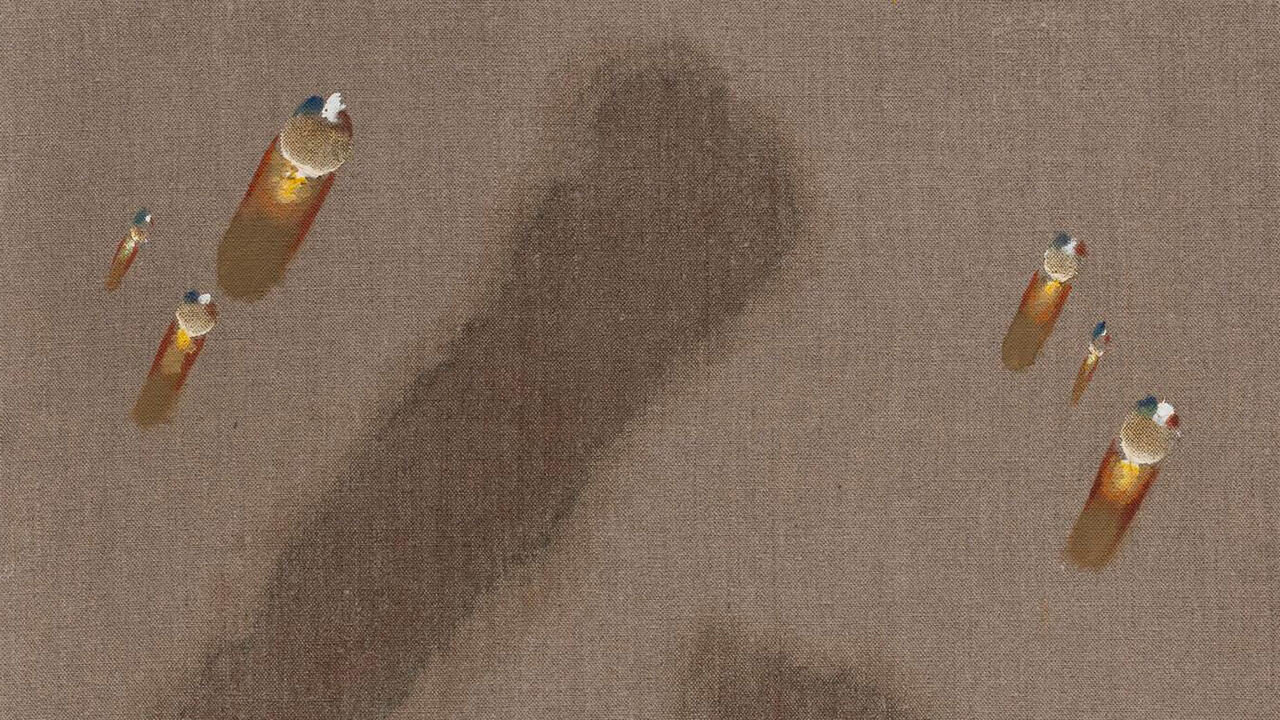Ella Kruglyanskaya

The phrase to ‘throw shade’ is a bitchy favourite, gleaned from the drag-ball scene of 1980s New York, where it was captured repeatedly falling from the mouths of drag queens in the now-canonical documentary Paris is Burning (1990). Jennie Livingston’s film is required viewing in queer and gender studies due to its appearance in Judith Butler’s Bodies That Matter (1993), which critiqued the limits of the subversive ‘realness’ of gender portrayed in the film, though celebrated the ball scene’s creation of alternative social and familial models. The phrase has made the jump into 21st-century pop culture, however, via the American reality TV series RuPaul’s Drag Race (2009–ongoing). Dorian Corey, one of the compelling central subjects of Livingston’s film, defines ‘shade’ like this: ‘I don’t tell you you’re ugly, but I don’t have to tell you because you know you’re ugly.’ Today, however, it has come to denote queeny, dismissive behaviour of all kinds.
There’s no more appropriate way to describe what’s going on with the pairs of women in some of Ella Kruglyanskaya’s riotous new paintings, in which one pointed, powerful women appears to effect a literal ‘crossing out’ or ‘shading’ of the other by some tart putdown or narrowing of the eyes. Take Negative Vibes (2013), a large painting in bright tones, flatly applied, in which the canvas has been divided into two colour zones, each containing a cartoonish woman. In the dark green corner we have a ponytailed figure in a red tube dress walking out of the picture, her hand a blur of oil stick fingers as she waves it over her shoulder, as if shooing away something unpleasant. Emphasizing the aggression of her gesture is the ruddy face emblazoned onto her tight tube dress – all bulging eyes, thin moustache and blaring mouth. This is directed at a rival: a woman in the violet corner, this one with a dark bob and an equally tight dress, high-necked and yellow. Her mouth is fixed in a crimson-lipsticked ‘O’ of surprise, as oil stick and paint scribbles fall down on her. A similar scene plays out in a related painting, Crossed Out (in green) (2013), in which a woman in a shearling-trimmed coat looks scornfully at one in a blue mackintosh, apparently causing a large dark green ‘X’ to cross her out.
Robust physicality is paired with sketchy flatness in Kruglyanskaya’s work. Two smaller paintings in this exhibition feature colourful figures interacting with images of sketchy drawings on paper. In The Pursuit (2013), a cartoonish detective appears to stalk a brightly painted woman. A pair of paintings in more muted tones show pairs of bathing women in swimsuits and bikinis, with bounteous milky cleavage and moon-like glowing buttocks, which fill the painting to the extent that they become difficult to make out. Sinister, villain-like men’s faces often appear on the bodies of women – their breasts figuring as eyes, or their pubic hair as a beard, which seems like a joke so cheap that it laughs at itself. And yet, like a cartoon character tapping the viewer on the shoulder, it reminds us that the painted bodies of sexualized women brings with them a set of problems that loom like a large shadow, or like the shadow monster chasing a woman in Blue Shadow (2013). It appears that Kruglyanskaya’s chosen weapon against such monsters, at this point in the 21st century, is to laugh in their faces.
Kruglyanskaya’s women are typically proportioned in a caricatured manner: pneumatic breasts, full thighs, high, generous rumps. In many of her paintings, these figures appear vaguely familiar and, though it’s difficult to place them, they carry with them a memory of cartoons in which a busty female is the butt of the joke: the secretary whose clothes fall off, the ‘come back to bed’ wife in the négligée – women whose excessive sexuality is their only characteristic. These works gleefully offer a viewing experience of high-comic drama and pure pleasure, but they also take on those age-old, male-inflected questions of flatness in painting (there is nothing flatter than an empty caricature). As Paris is Burning made clear, there’s potential in camped-up mimicry, which might show up constructions of gender to be fictions. Kruglyanskaya creates such cartoonish models of female sexuality and behaviour on canvas, ramps them up several hundred notches, creates a space in which such women might interact with one another – and, in doing so, throws some serious shade on a very macho history of painting.

















